What are the Nam Du Islands?
Location & scenery
Nam Du lies in the Gulf of Thailand, southeast of Phu Quoc and about 80 km from Rach Gia on the mainland. The archipelago has just over 20 islands, but almost all visitor infrastructure is on Hòn Lớn, often referred to as Nam Du Island itself. The landscape is hilly and green, with the highest point reaching 309 meters.
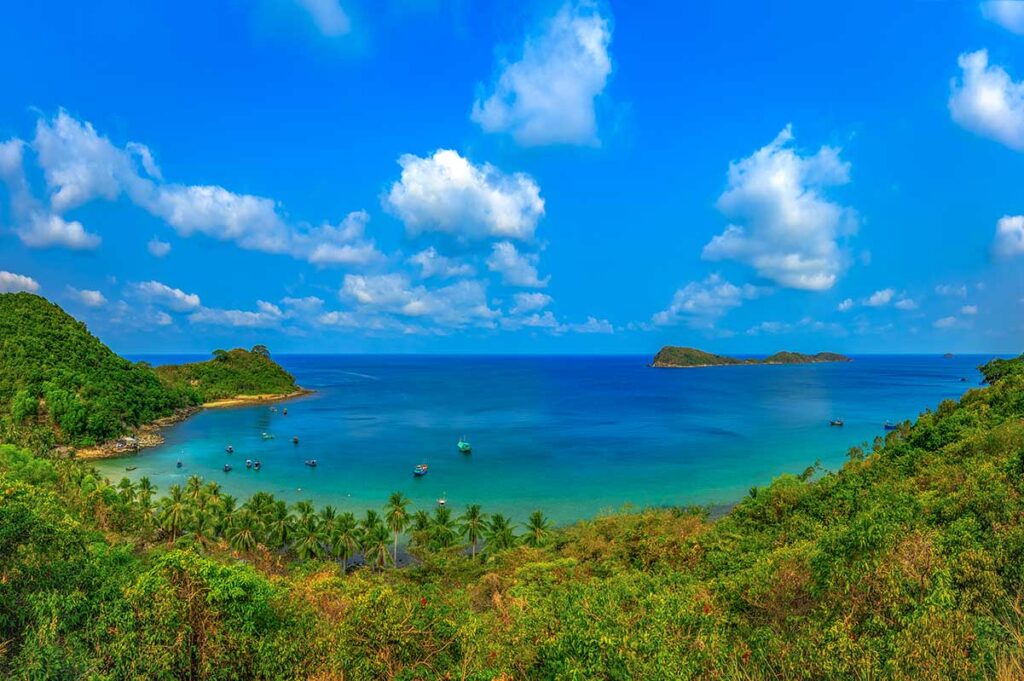
Expect steep slopes, rocky coves, and only a few true sandy beaches—Cay Men being the standout. The rest of the coastline is more about rugged views and clear water than long stretches of sand.
Life on the islands
Fishing is the backbone of local life, and tourism still comes second. Villages are compact, with narrow alleys, fish farms just offshore, and small markets selling the day’s catch.
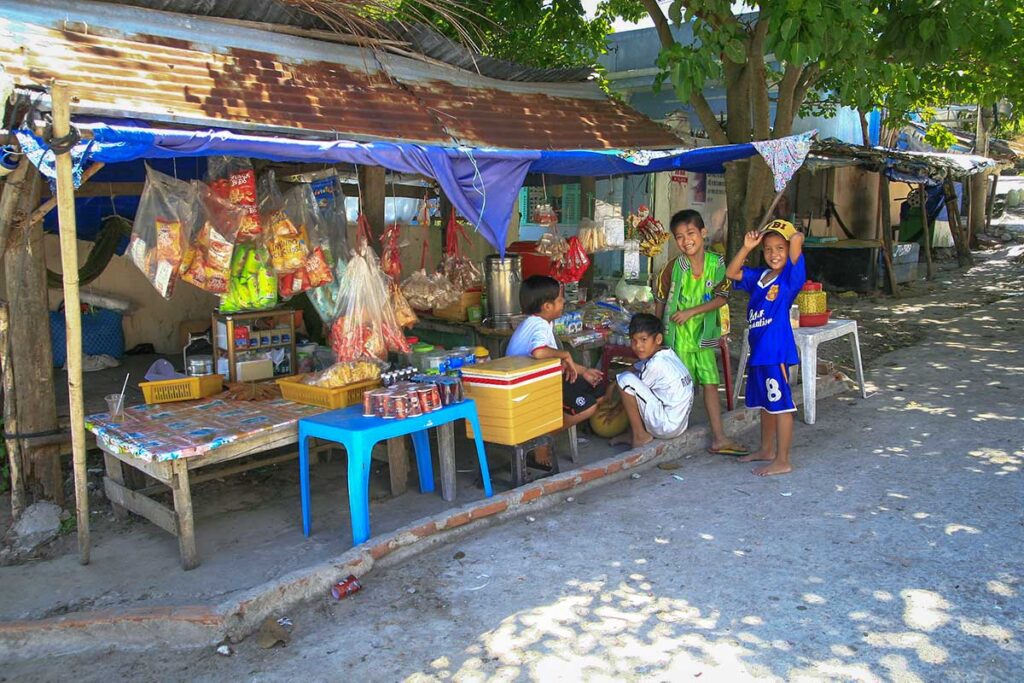
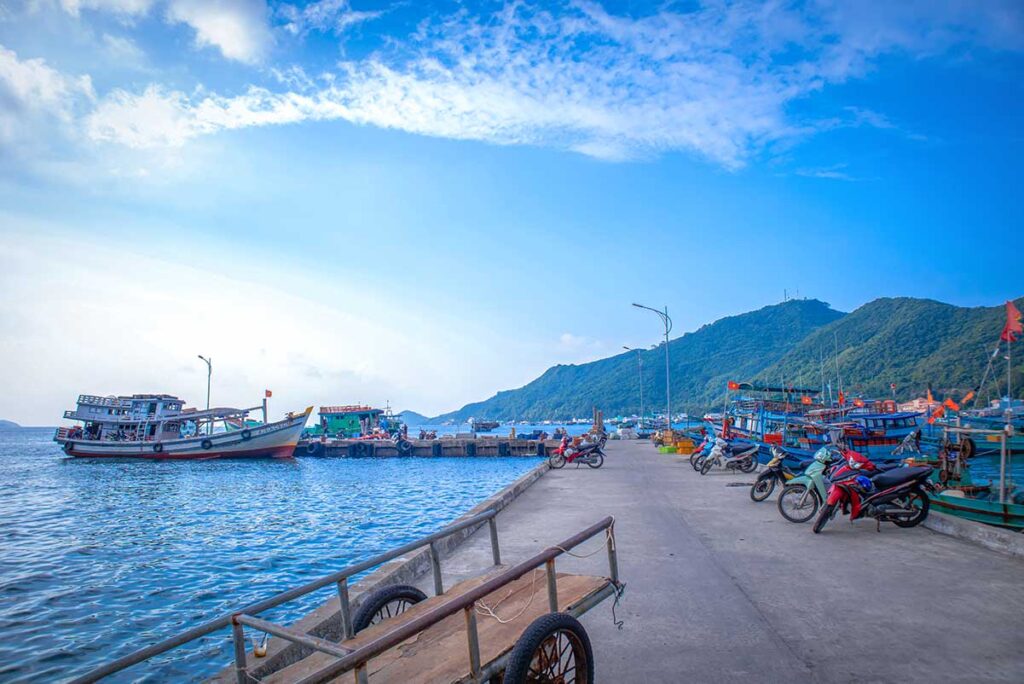
Don’t expect shopping streets or cafes beyond the basics—this is a cash economy where daily life revolves around the port and the sea. Waste management has improved but remains a challenge. Plastic and other litter often wash ashore or build up near the wharf, which can be jarring against otherwise stunning scenery. This is common on small islands where infrastructure lags behind the arrival of tourism.
Nam Du as a tourist destination
For years, foreign visitors weren’t even allowed on Nam Du without special permits. That changed recently, and today fast ferries connect the islands with Rach Gia. Even so, it’s still off the beaten path compared to Phu Quoc, which has airports, resorts, and mass tourism.
Nam Du draws mostly domestic travelers, especially young Vietnamese looking for a quick beach escape. On weekdays the islands can feel quiet and remote, but weekends and holidays see big spikes in local visitors—bringing both energy and noise. For now, Nam Du remains a raw, adventurous alternative, but it’s no longer a complete secret.
Best time to visit Nam Du
Nam Du has a tropical monsoon climate with two distinct seasons.
- Dry season (November–April): This is the best time to visit. Skies are clearer, seas are calmer, and ferries run more reliably. Beaches like Cay Men show off their turquoise water, and boat tours are comfortable. March and April can feel hot, but overall this is peak “beach weather.”
- Rainy season (May–October): Travel is riskier. The sea gets rough, and heavy rains often lead to ferry cancellations. If boats stop running, you could end up stuck on the island for days. Even when ferries operate, long downpours make riding the coastal road or enjoying the beaches less appealing.
In short, plan for the dry season if you want a smooth trip. The rainy months can offer a quieter atmosphere and lush scenery, but only if you’re comfortable with the possibility of delays and limited activities.
How to get to Nam Du Island?
First step: Rach Giá (gateway)
To reach Nam Du, you first need to get to Rach Gia, the main port city of Kien Giang Province. From Ho Chi Minh City, the most common option is the night bus (about 6–7 hours), with reliable companies such as Phuong Trang (Futa) and Kumho. This way you arrive early in the morning, in time to catch the first ferries.
Another option is a domestic flight from Ho Chi Minh City or Phu Quoc to Rạch Giá Airport, followed by a short taxi ride to the port. The passenger pier is located on Nguyen Cong Tru Street, where ferry offices cluster. Staying nearby or arriving the night before makes catching early departures less stressful. Tickets can be checked and booked on sites like Baolau, which is useful for foreign travelers.
Taking the boat from Rach Giá to Nam Du
Ferries are the only way across. The main operator is Superdong, with occasional services from Phu Quoc Express. The journey takes around 2 hours 30 minutes, depending on sea conditions. Schedules change by season and may not run every day year-round, so it’s important to book ahead. Weather, especially during the rainy season, can also cause cancellations. Tickets can be purchased directly at the pier or in advance through booking platforms such as Baolau or Ferryhopper.
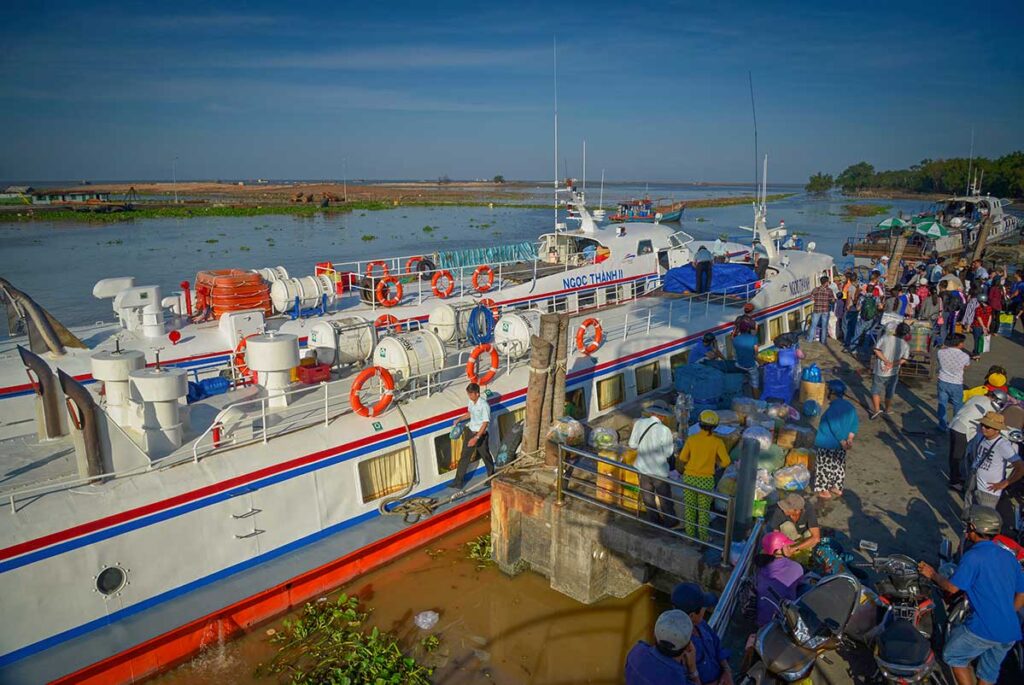
Boarding is straightforward but plan to arrive 30–45 minutes early to check in and load luggage. Seating is simple, air-conditioned, and assigned. If you’re prone to motion sickness, consider medication—the seas can get choppy. Carry snacks and water, as onboard options are limited. For your return, always double-check sailings before booking accommodation, since in low season or bad weather, boats may be reduced or canceled, leaving gaps of a day or more.
Note: Ferries between Rạch Giá and Nam Du do not run every day year-round. Always check the schedule carefully and plan your itinerary around available sailings.
Practical visiting information & tips
How long you need & timing
Two to three nights is the sweet spot. With that, you get a full day to ride the coast road around Hòn Lớn (Nam Du’s main island) and another day for a boat tour to the outlying islands. A shorter stay is possible, but ferry schedules make it easy to lose half a day coming or going, so plan carefully around departure times.
What to bring & prepare
- Cash: There are no ATMs on Nam Du, and card payments are rare. Bring enough to cover motorbike rental, boat trips, food, and accommodation.
- Connectivity & power: Expect patchy 4G coverage and the occasional power cut. A power bank is very useful.
- Sun & sea gear: Boats and beaches have little shade. Pack strong sunscreen (reef-safe if possible), a dry bag for valuables, and basic first aid.
- Waste awareness: Islands struggle with trash disposal. Reduce plastic use, carry reusable bottles, and take litter back with you.
Eating on the island
Food is mostly local seafood, cooked in simple family-run eateries around the wharf and small coves. Menus are Vietnamese-only, but pointing at ingredients works fine. Prices are higher than the mainland but still affordable, especially for fresh fish and shellfish. Western food is virtually non-existent.
Getting around
The best way to explore is by motorbike, rented from guesthouses or stalls at the wharf. The island loop is only about 15 km, but expect steep climbs and sharp bends—ride carefully if you’re not confident. The road is paved and scenic, making the loop itself one of the highlights of a visit.
Other need-to-knows
- Weekends and public holidays bring a big influx of domestic travelers, so expect noise and crowded beaches.
- Shoreline litter is common near the pier and some smaller coves. The best beach, Cay Men, is usually kept clean, but it’s good to set expectations before you arrive.
What to do and see on Nam Du Island
1. Drive the coastal road by motorbike (Hòn Lon loop)
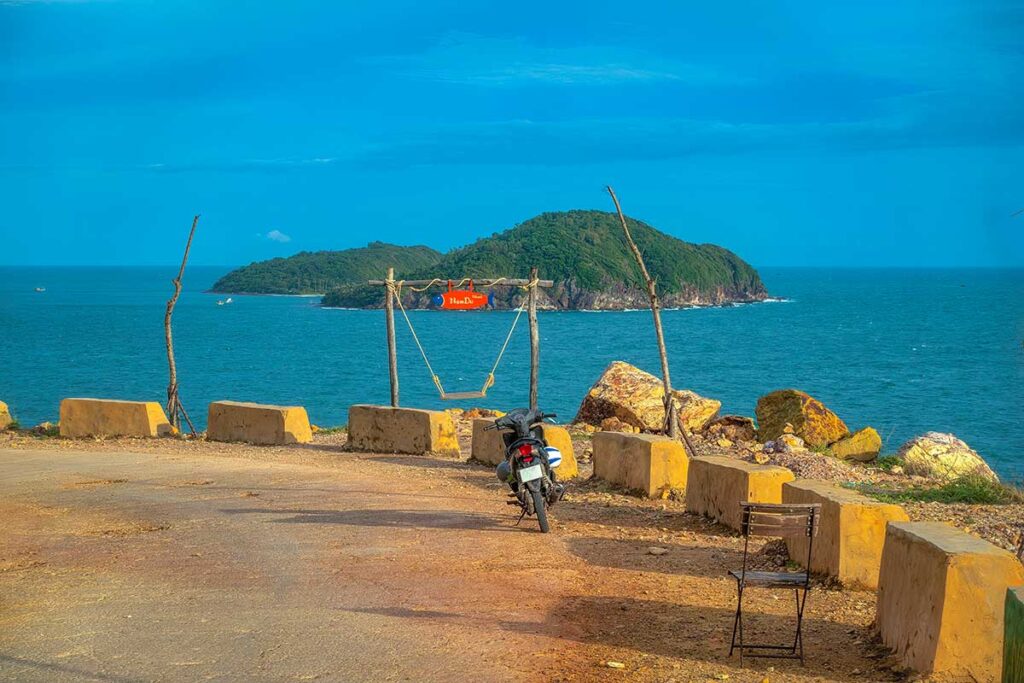
The best way to experience Nam Du is a simple one: ride the coast road around Hòn Lớn. The loop is only about 15 km, but it’s packed with views—steep hills dropping into turquoise bays, coconut groves, and glimpses of the outlying islands on the horizon. The ride itself is an attraction, with short detours leading to fishing hamlets and hidden coves. A spur road climbs steeply toward the military lighthouse (see 5.4), adding some adventure if your bike can handle the incline.
Other pocket coves on the west coast
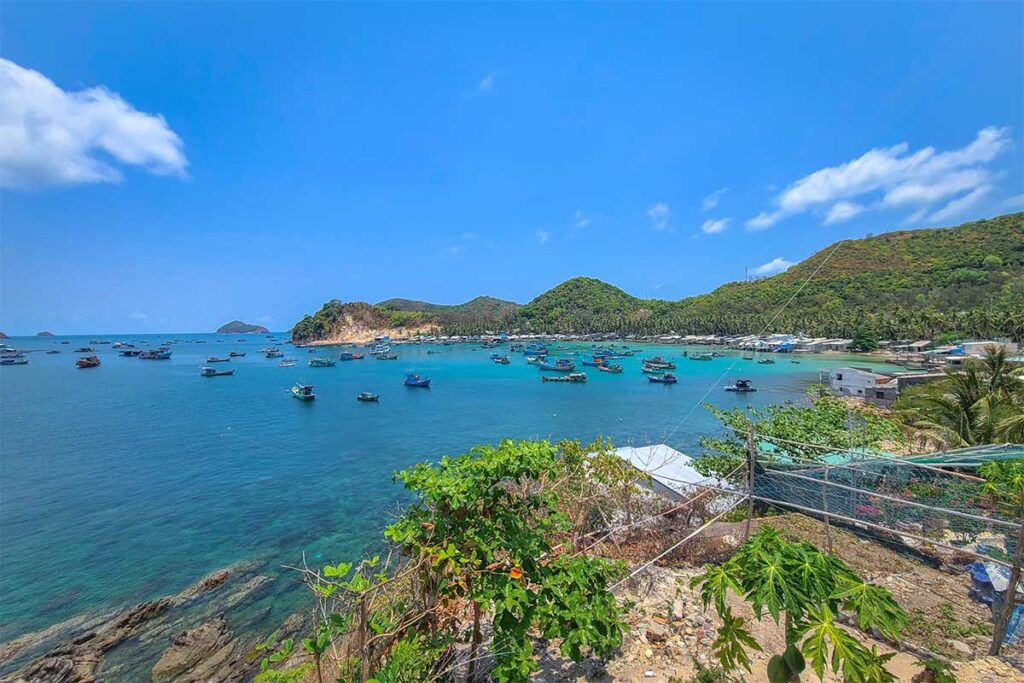
If you ride the western stretch of Hòn Lớn, you’ll pass several small bays. They’re scenic for photos or a quick stop, but most are rocky rather than sandy and not ideal for swimming.
Temple of whale worship (Đình Nam Hải Ngư Thần)
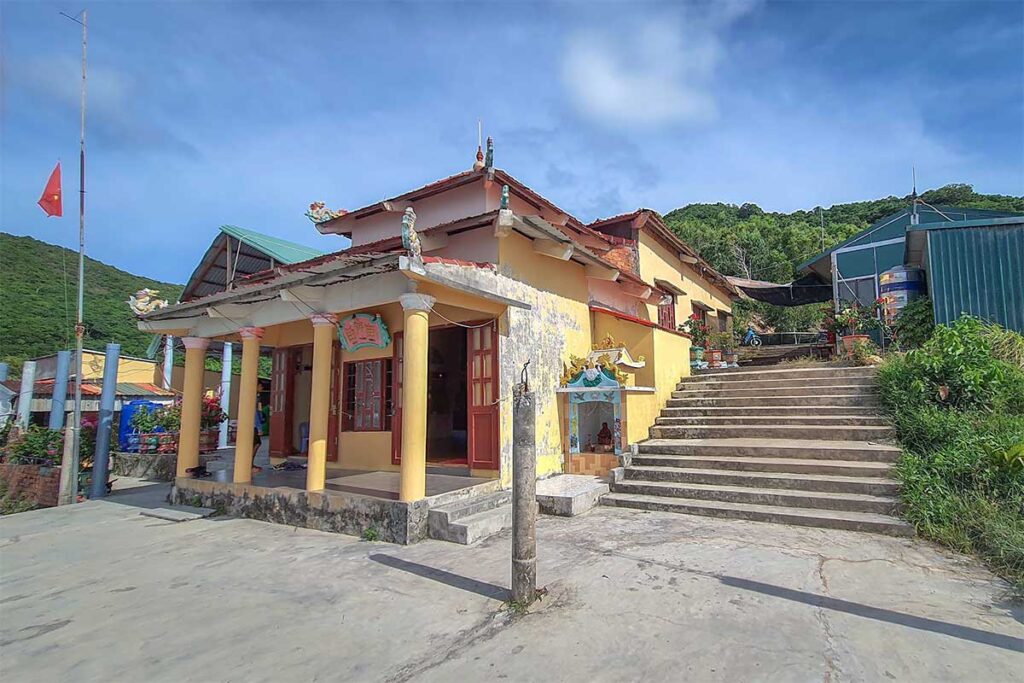
On the west coast loop, this small temple houses whale bones and reflects a tradition of coastal communities honoring whales as guardians of sailors. It’s a quick but interesting cultural stop if you’re already circling the island.
2. Cay Men Beach (Bãi Cây Men)
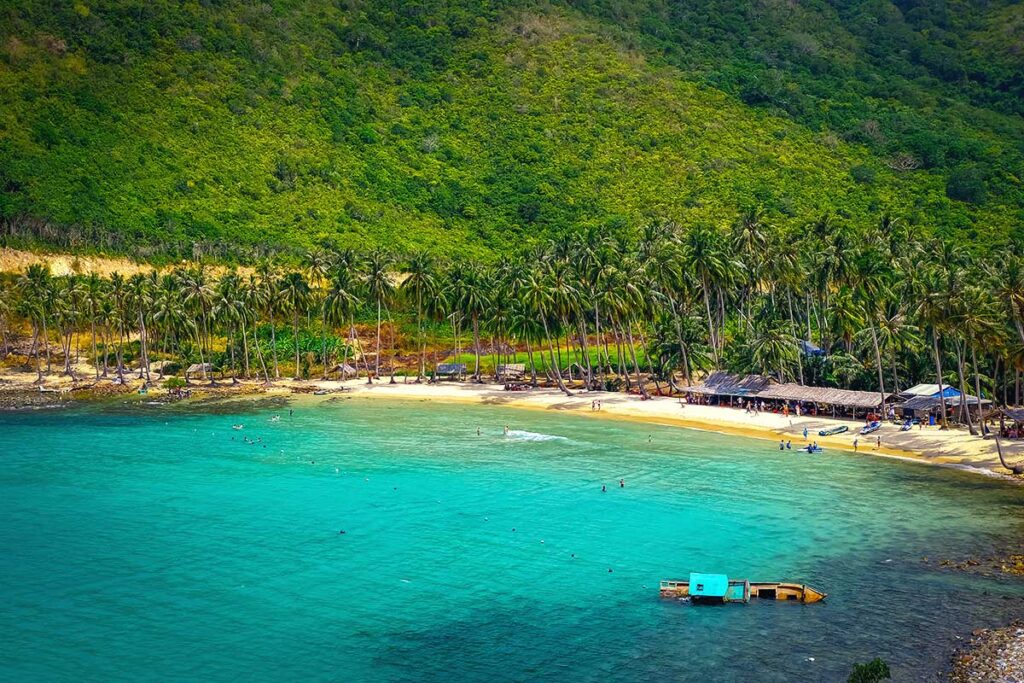

This is the island’s main sandy beach and the one that lives up to postcard expectations. A small crescent of white sand is shaded by leaning palms, and the water is usually calm and shallow. Simple shacks sell coconuts and snacks, and you can pay a small fee for showers. It’s possible to pitch a tent here, which is one of the few camping options on Nam Du. Don’t expect a resort setup—this is about quiet swimming and laid-back relaxation.
3. Island-hopping by local boat (half or full day)
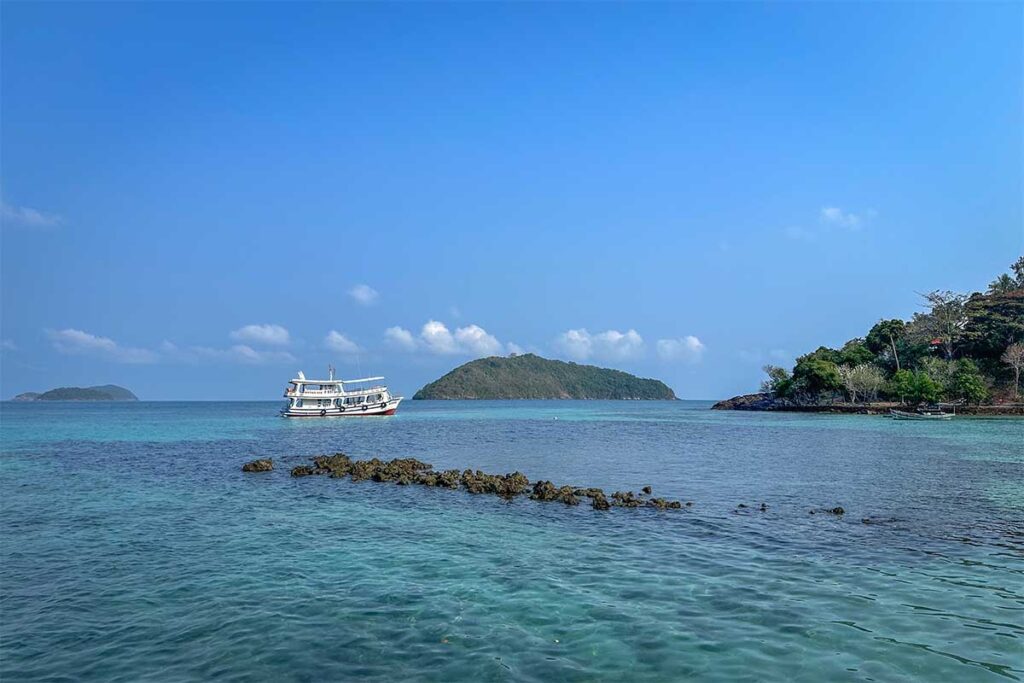
From the wharf, boat tours run to the smaller islands in the archipelago. Hon Mấu is usually the highlight, thanks to Bãi Chuồng Beach, while Hòn Hai Bờ Đập offers a photogenic natural rock causeway. Other stops include Hon Dầu (also called Hon Trung) for snorkeling and Hon Ngang with its fish farms.
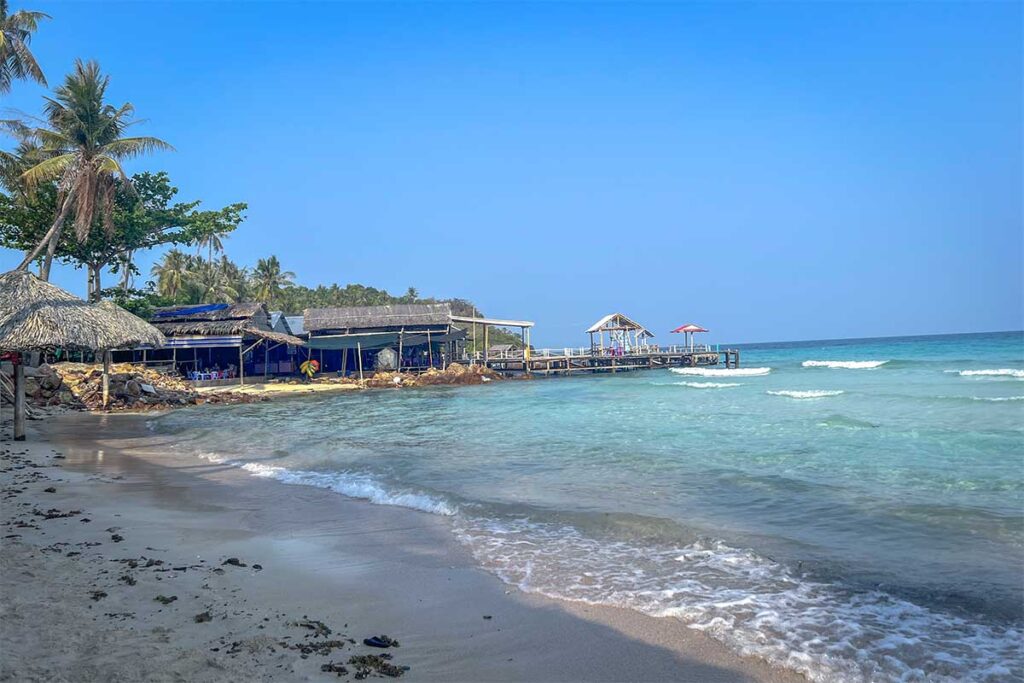
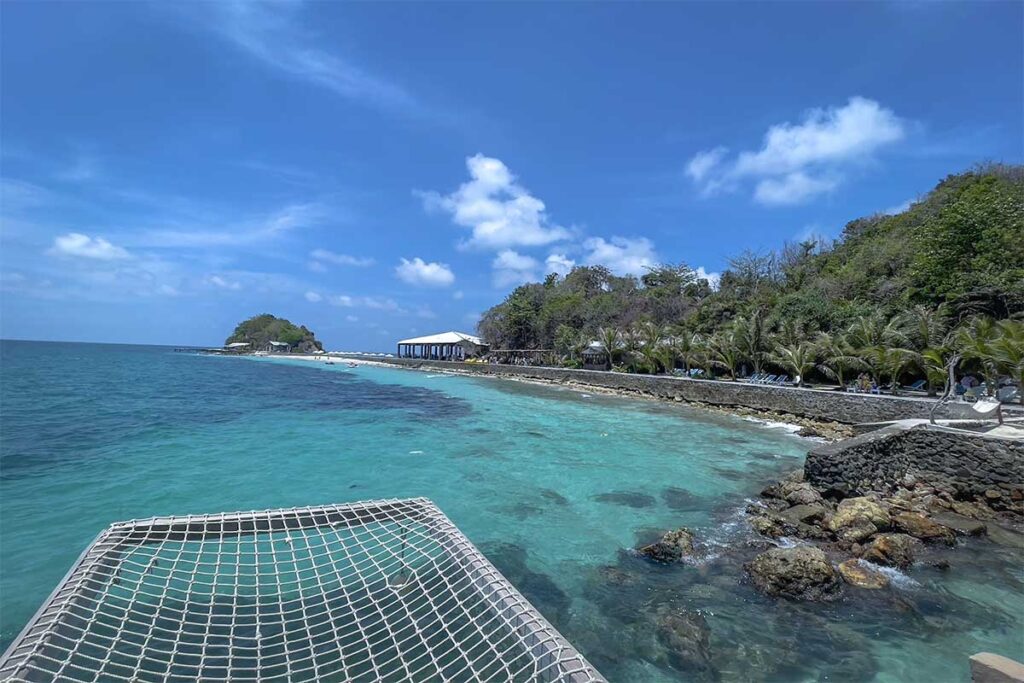
A shared group trip is inexpensive and straightforward, while hiring a private boat costs much more but lets you set the pace and avoid crowds. The beaches can vary—some lovely, others rocky or marred by trash—so manage expectations.
4. Lighthouse road & viewpoints
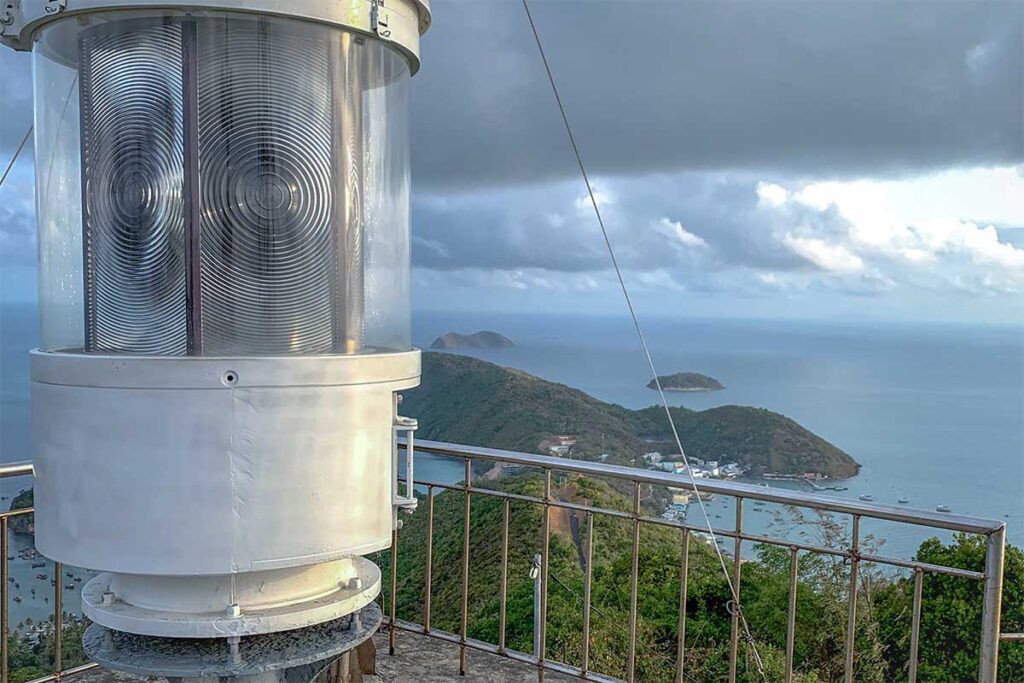
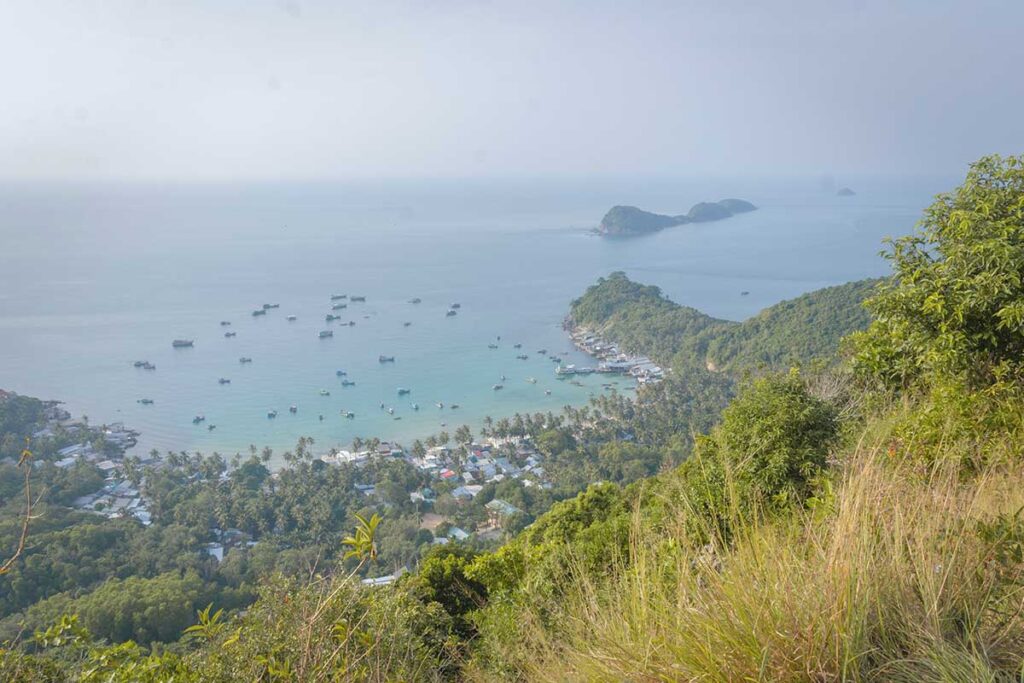
The Nam Du Lighthouse sits inside a restricted military zone, and entry is usually not allowed. The road up, however, is worth it. Even if you stop short of the gate, the views from the hillside are wide and impressive, stretching across the island chain. The ride is steep, and walking it is hot and tiring, but the panoramas reward the effort.
5. Nam Du Wharf & fishing life (Bãi Tret / Cu Tron)
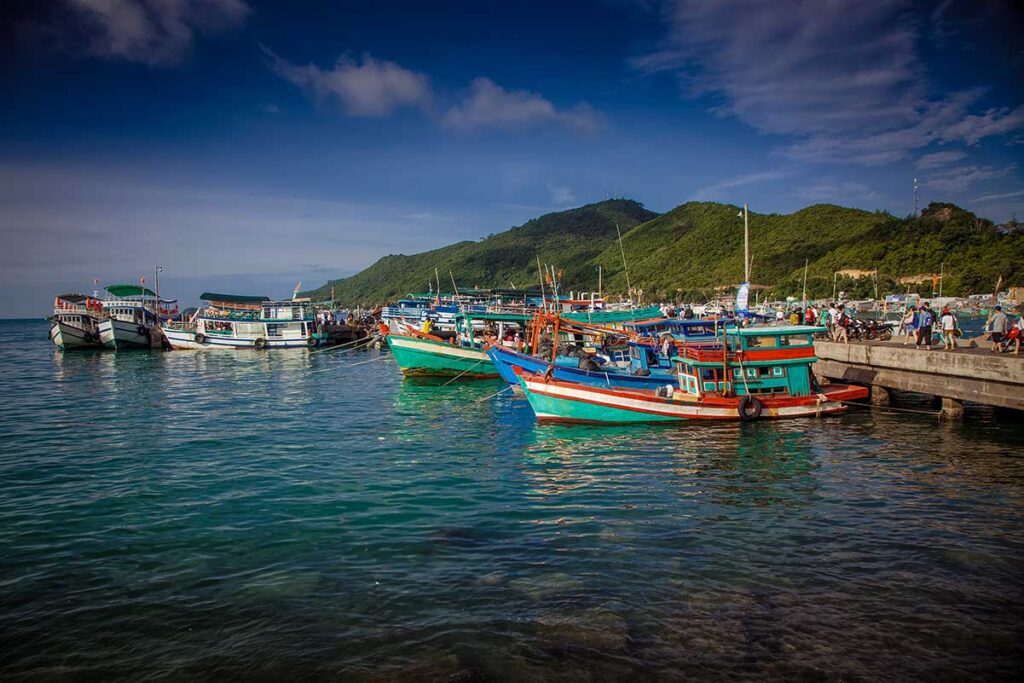
This is the heart of the island, where all ferries arrive. The pier and its surroundings are busy, noisy, and crowded with fishing boats, seafood eateries, and new guesthouses. It’s photogenic in its own way—rows of colorful boats bobbing in the water—but also messy, with litter along the seawall and karaoke blasting at night. Still, it’s the best place to try cheap seafood or stock up before heading out for the day.
6. Snorkeling realities
Nam Du’s waters look clear, but coral reefs have suffered from fishing and tourism. You can still see fish and coral patches at certain spots, especially near Hon Bo Dap or rocky ledges included in boat tours, but this isn’t world-class snorkeling. Bring reef-safe sunscreen, and keep your expectations modest.
Where to stay on the island?
Accommodation on Nam Du is basic but comfortable enough for a short stay. Expect family-run homestays and small hotels rather than polished resorts. English is rarely spoken, but the views and hospitality often make up for the lack of formal service. Book ahead if visiting on weekends or holidays, and always bring cash.
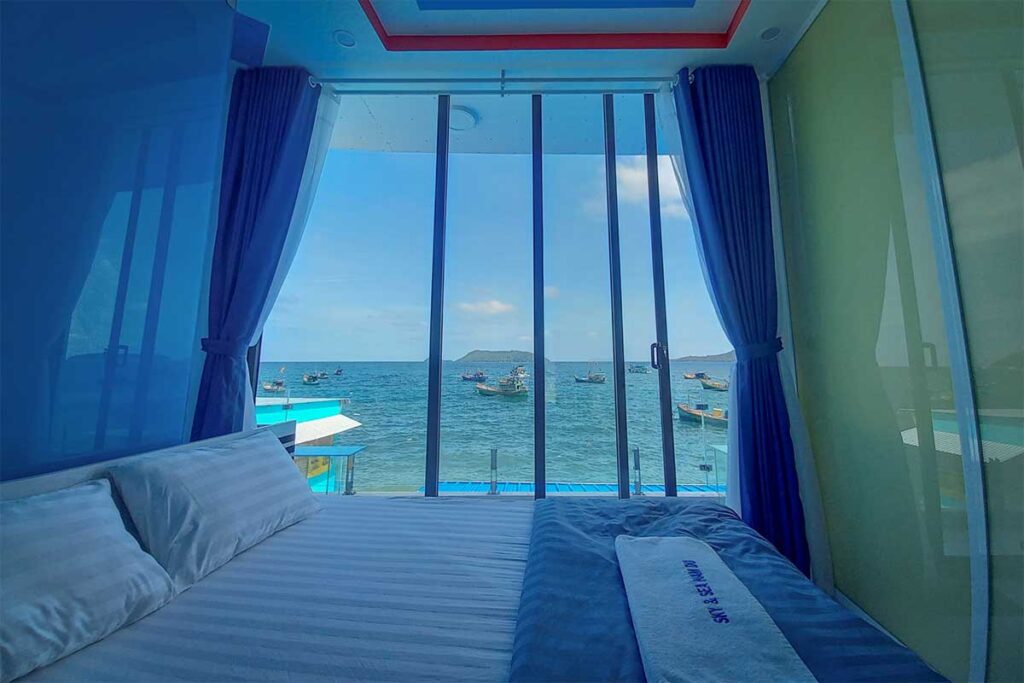
Sky & Sea Nam Du (Nhà nghỉ Sky & Sea) – A straightforward guesthouse with clean rooms, balconies overlooking the bay, and walking distance to the wharf. Motorbike rental is available, and the owners help with transfers, making it a hassle-free choice.
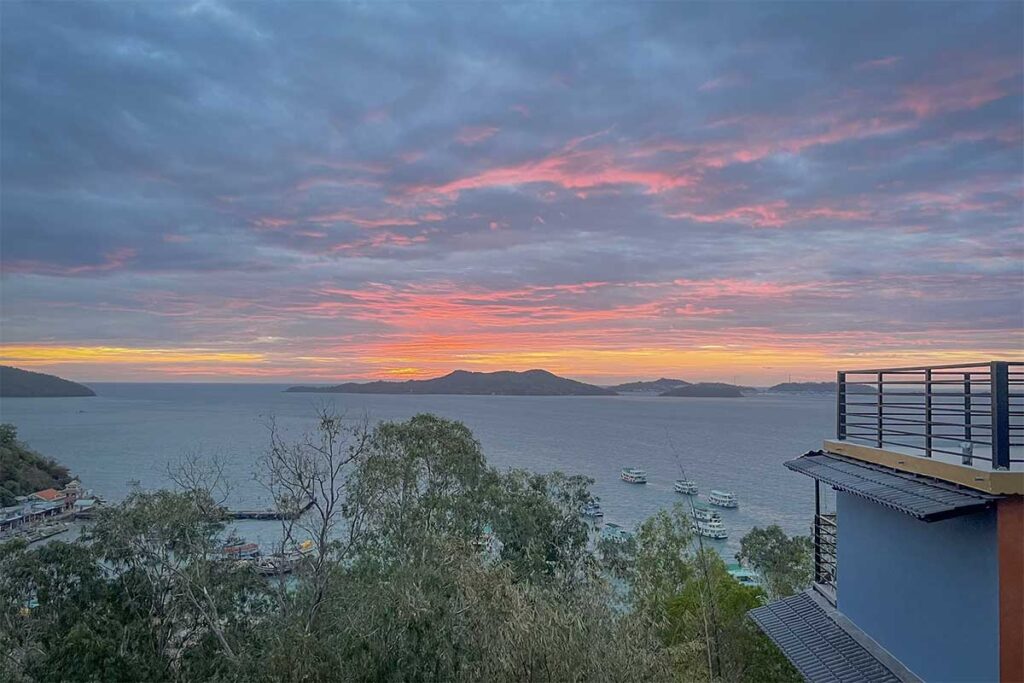

The Nam Du Hill – The most developed option on the island, with a pool, panoramic views, and a relaxed social atmosphere. Rooms are spacious, the restaurant is reliable, and while prices are higher than elsewhere on Nam Du, the comfort and setting justify the cost.
Is Nam Du Island worth visiting?
Nam Du is best suited to travelers who enjoy a low-key, off-the-beaten-path island with just enough to fill two or three days: a scenic motorbike loop, one standout beach at Cay Men, simple boat tours, and a glimpse of everyday fishing life.
It’s not the right choice if you’re looking for polished resorts, multiple sandy beaches, lively nightlife, or perfectly maintained infrastructure. Trash around the wharf and occasional power cuts are part of the reality here.
The bottom line: if you’re drawn to quiet scenery and don’t mind rough edges, Nam Du is a rewarding side trip. If comfort and convenience matter more, you’ll likely prefer Phu Quoc or other developed islands.


